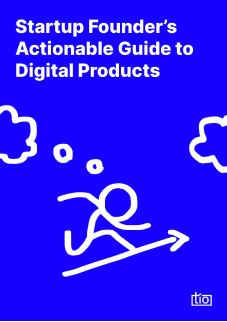Jobs to be Done Framework in Lean Product Development

As the old story suggests – although the example might become a cliche, it’s still relevant- people in the morning buy milkshakes because they want to make their long boring commute interesting. With the standpoint of jobs to be done, people hire a cup of milkshake to entertain them. You can learn the study directly from Clayton Christensen (who developed the theory of disruptive innovation) himself:
Jobs to be done (we will mention the framework as JTBD from now on) offers that customers pay for a product because they want to do something with it, what they do and accomplish with the product is where developers should focus on. The framework is useful to understand why a product could thrive in the market or not. Although this may seem intuitive, relatively few companies are looking for chances for innovation from the standpoint of JTBD.
In this article we will clarify the Jobs to be Done framework in relation with lean product development. In addition to explaining, we try to create a solid base for understanding how the framework might be helpful for your unique case. We also included links to key works and resources for further reading.
What Exactly is Jobs to be Done?
Jobs to be done is a framework for understanding what customers want to do. Jobs to be done is an innovation framework based on the economic assumption that people buy products and services to help them accomplish tasks, achieve goals and objectives, resolve and avoid issues. According to the theory, markets change anytime customers have a new job to do and then purchase a product to accomplish it.
JTBD framework widely used in user research for both new and existing products since the 1990s. One of the very first contributions to the framework was the book, Jobs to be Done: Theory to Practice by Tony Ulwick. The book was published in 1991 and the framework has been used in production systems since then. According to Ulwick, any innovation effort should answer these questions:
- Who is the customer?
- What job is the customer trying to get done?
- What are the customer’s desired outcomes?
- How do they measure value?
- Do segments of customers exist that have different unmet outcomes?
- What unmet outcomes exist in each segment?
- What segments and unmet outcomes should we target for growth?
- How should we define our value proposition?
- How should we position our existing and pipeline products?
- What new products must we create?
JTBD is offering the answers to these questions along with the most possible benefit for all product developing objectives and stages including user research, user experience design, product management, marketing, and so on. But how?
To apply the JTBD framework, it’s required to focus on jobs, instead of who is doing it or why.
At the core of the idea of JTBD, there is the acceptance of “people don’t buy products, they hire them to get a job done”. This creates a whole new point of view. The jobs to be done theory along with the perspective it creates, turned into a beneficial tool over the years. It is used widely with a lean product approach, and found beneficial especially for the user research.
In this article which brings product development JTBD frameworks together to make a JTBD documentary for user interviews, JTBD helps the team to organize and collect just enough of user insight in the shortest possible time.
You can also listen to a real JTBD interview here.
Alan Klement’s e-book might be another good start for further reading on the JTBD framework.
What is Job Mapping?
A job map is a visual representation of a core functional job that has been broken down into its individual discrete steps or processes and shows step-by-step what the customer is attempting to do.
What Customers Want from Your Products, a relatively early study on the JTBD framework from Harvard Business Review and Advertising Research Foundation (could be suggested to read) provides a 8 steps guide to create a Job Map. You can finn 8 steps you need to follow for the product development standpoint of the JTBD framework in the JTBD canvas above. In the JTBD canvas, you may also saw dimensions, which are also known as types of jobs:
- Social jobs.
- Functional jobs.
- Emotional jobs.
From this standpoint, a job is a description of how a person wants to change their circumstances. The job isn’t about the user, it’s about their problem and desired outcome. To understand jobs, you must know what the goal is for which you’re trying to achieve something in your product development process.
David Lee’s JTBD post is an insightful source.
This MIT Sloan Review article might help too.
As a result,
Jobs to be done framework might be useful for any size of product development, but it hasn’t got the attention it deserves. JTBD framework offers a new perspective to see products and users in 3 steps:
- Understand your Customer’s Job-to-be-Done
- Discover Hidden Opportunities in Your Market
- Use New Customer Insights to Drive Growth
In a larger sense, JTBD expects that products will come and go for customers as the job they are attempting to handle changes over time. In the end, JTBD helps us to understand how people want to get things done and how we can help them do that by creating products for them. We don’t want to just create products that look good on paper or that sound good when we explain them in meetings; we want to build products that actually solve real problems for real people who need solutions right now.
tio
10/27/2022
